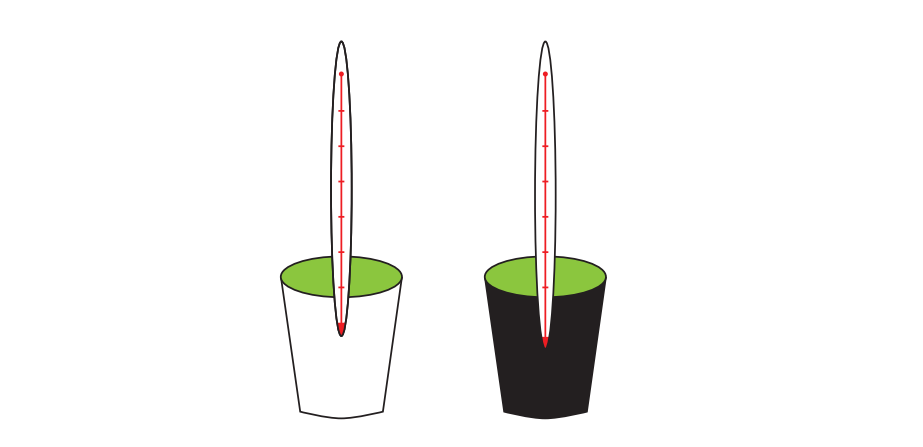



2 identical jars with lid, 2 thermometers, plasticine, stop watches, white and black paper (same kind, different colors only), glue
In the fourth task, pupils explore how the air temperature depends on color. Pupils will explore an important factor (color) that can cause differences in the temperature of the earth‘s surface. At the beginning of the activity, the teacher can use the concept cartoons© image titled Black and White Car, which is also included in the worksheet:

The pupils are asked which car they think will be warmer when the sun is shining on both of them – white or black. Let pupils think about the statements in the picture – the pupils lean towards the statement (s) they (i) agree to justify their choice. If they disagree with a single statement, they can create their own.
The teacher then discusses with them the statement to which they agree with, and asks for reasons. It is suitable if the pupils justify their opinions using their own experience (eg I think a dark car will be warmer, because when I ran barefoot on an asphalt road, my legs burned more than when I stood on the lawn). They write down their predictions in the worksheets
The teacher then asks the pupils how they can verify their predictions. Let the students in the groups discuss the workflow to verify their predictions about the represented phenomenon. Pupils can suggest that they wore white and black t-shirts - in this way they would probably not be able to measure temperature (it would be only subjective expression). If pupils have a problem with the proposal, the teacher helps them with the proposal.

They can investigate this problem using two identical cups (eg plastic/paper coffee cups), one wrapped in white paper and the other in black. It is important that the papers are of the same kind, only of a different color. At the top of the glasses they place a lid into which the teacher pre-drilled a hole for a thermometer. Place the thermometer in the lid opening so that the scale is above the lid and the bottom of the thermometer is below the lid (thermometers should show the same value). They attach the thermometer to the lids with plasticine to prevent heat escape). In this way, the teacher supports the development of competence objective reality.
Then place the thermometer in the cups. It is important to warn pupils that there are no holes or gaps in the cap to allow heat to escape. The cups thus created are placed in sunlight. After about 30 minutes, the pupils check the value and write down the results.
A more complicated option may be to record the temperature in both cups at regular intervals (eg every 5 minutes). In order to allow pupils to check the elapsed time, they can use a hourglass or a stopwatch. They will record the results again and draw conclusions from them, returning to the question at the beginning of the activity they answer.